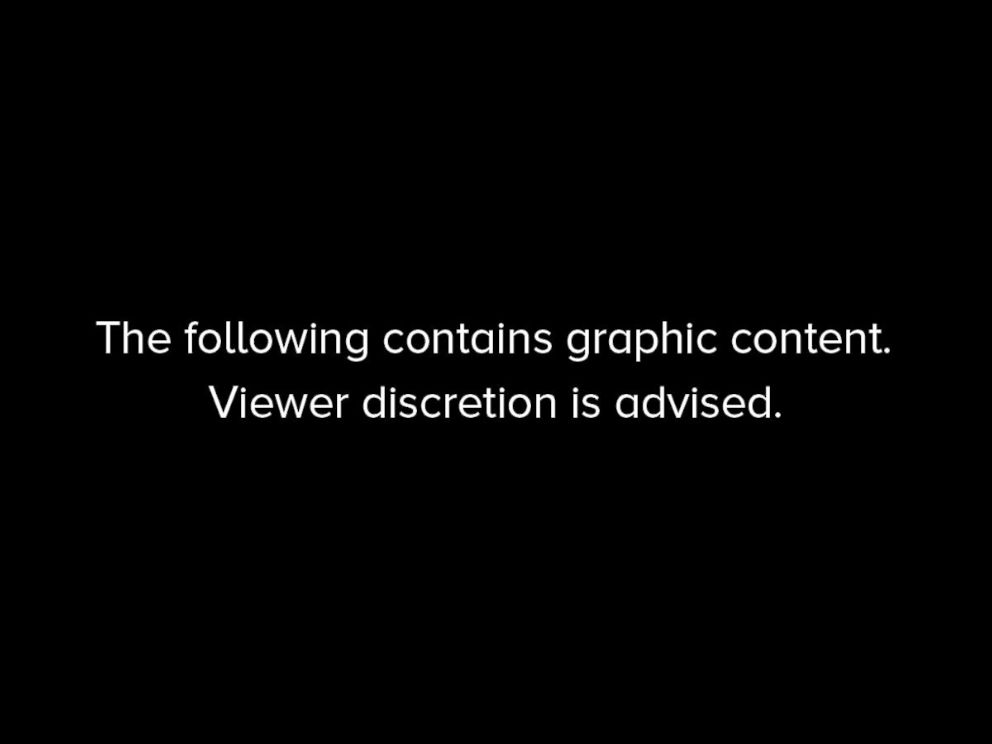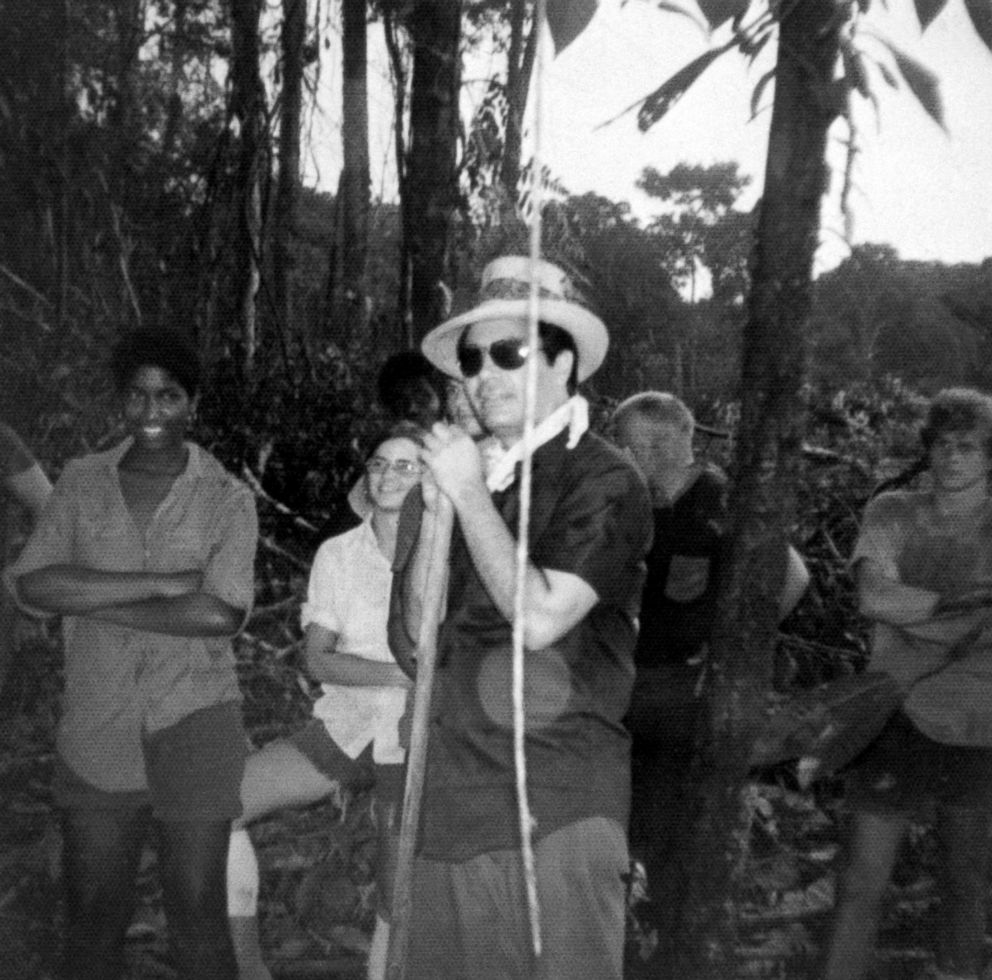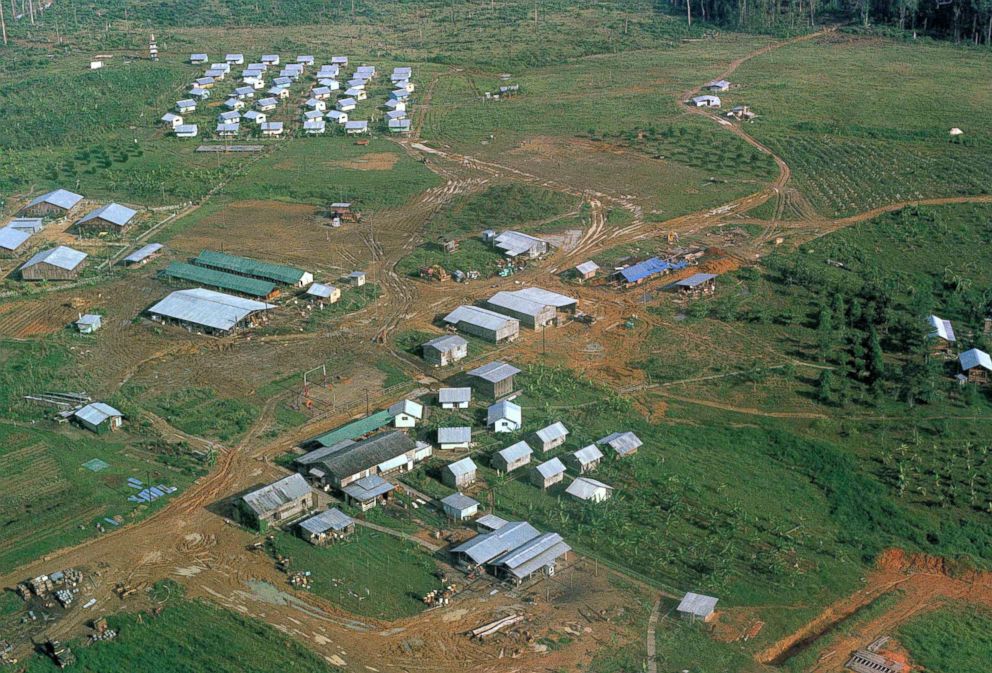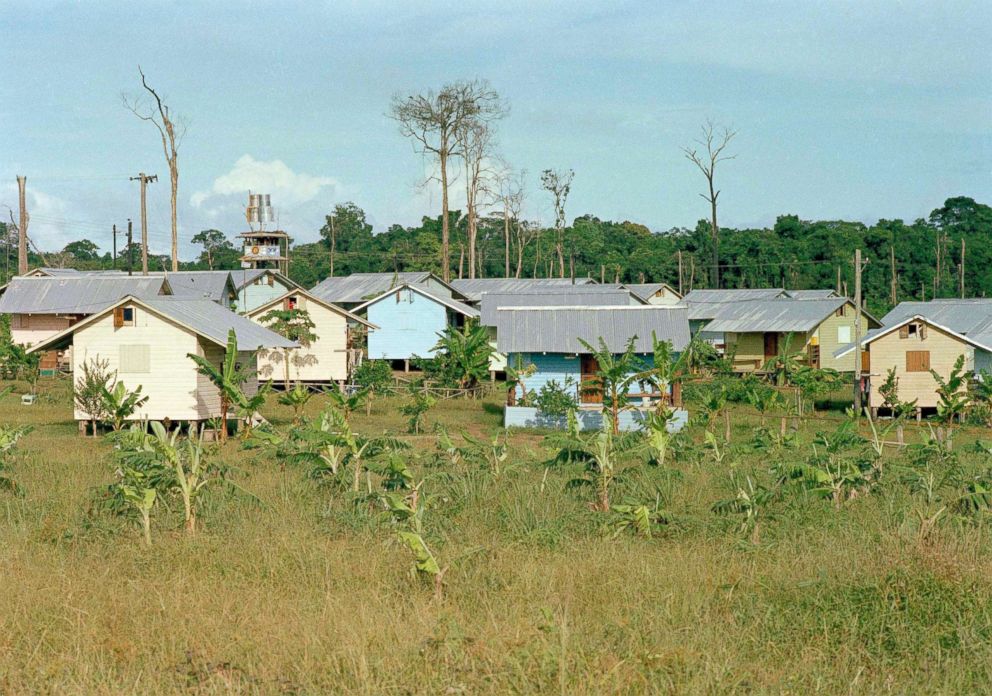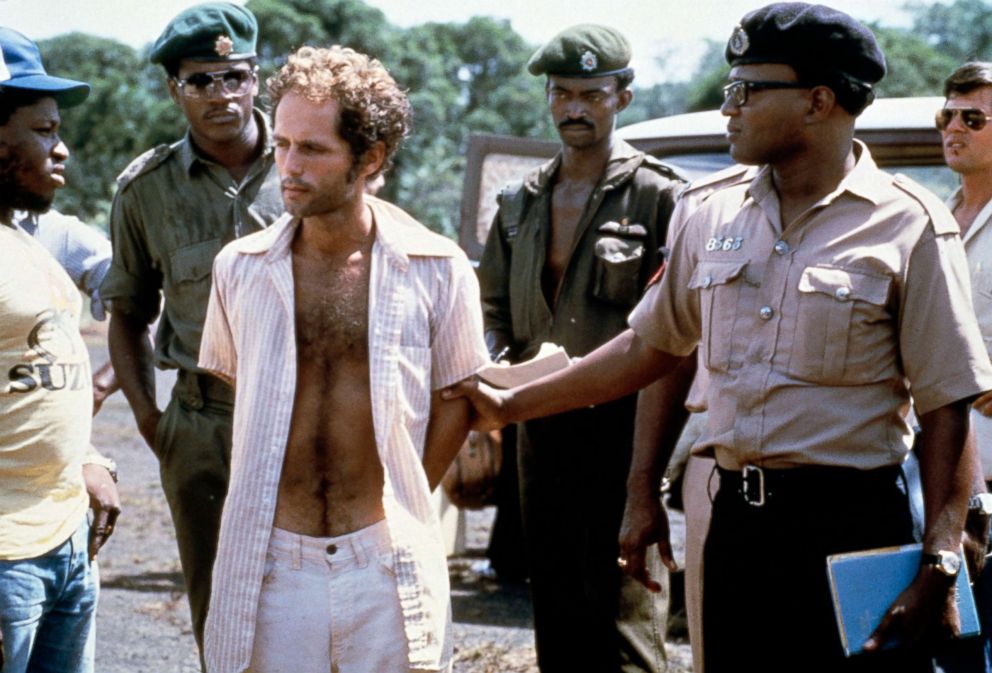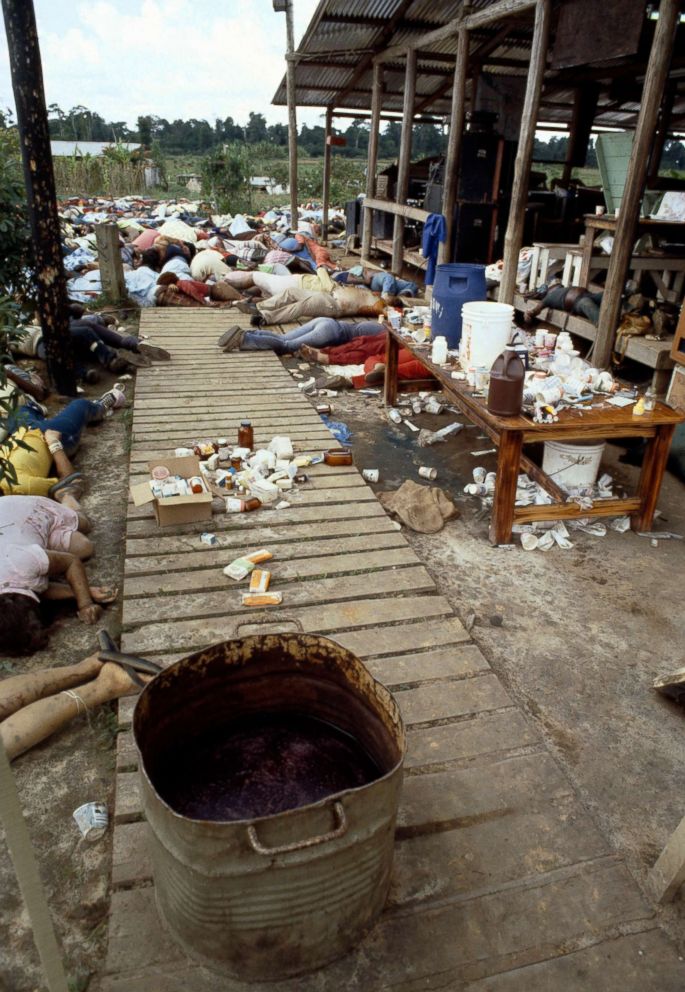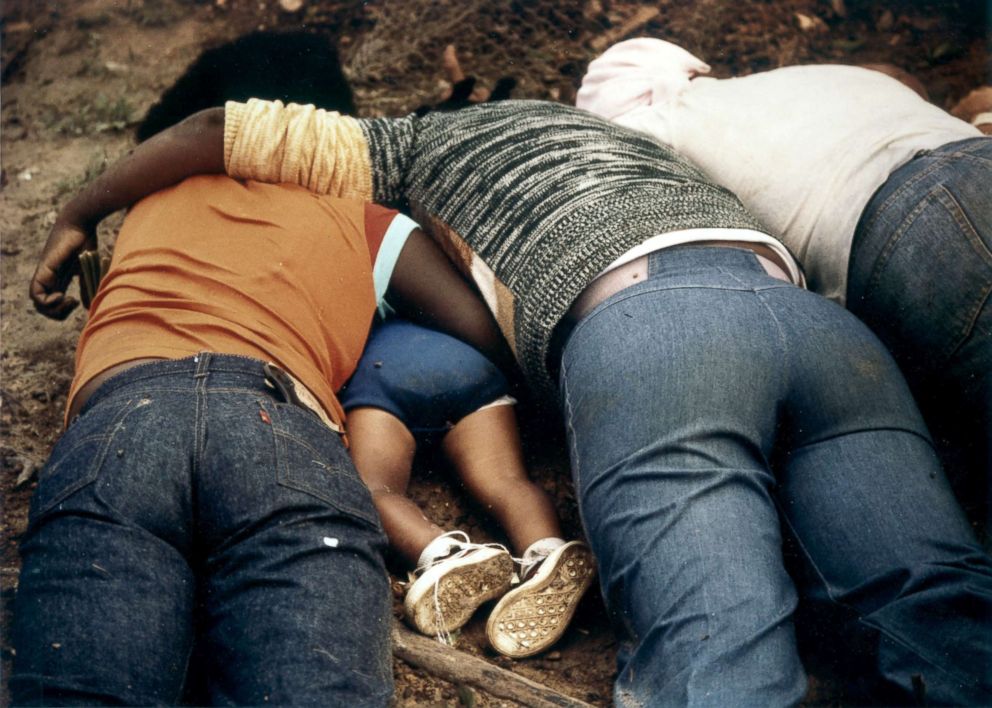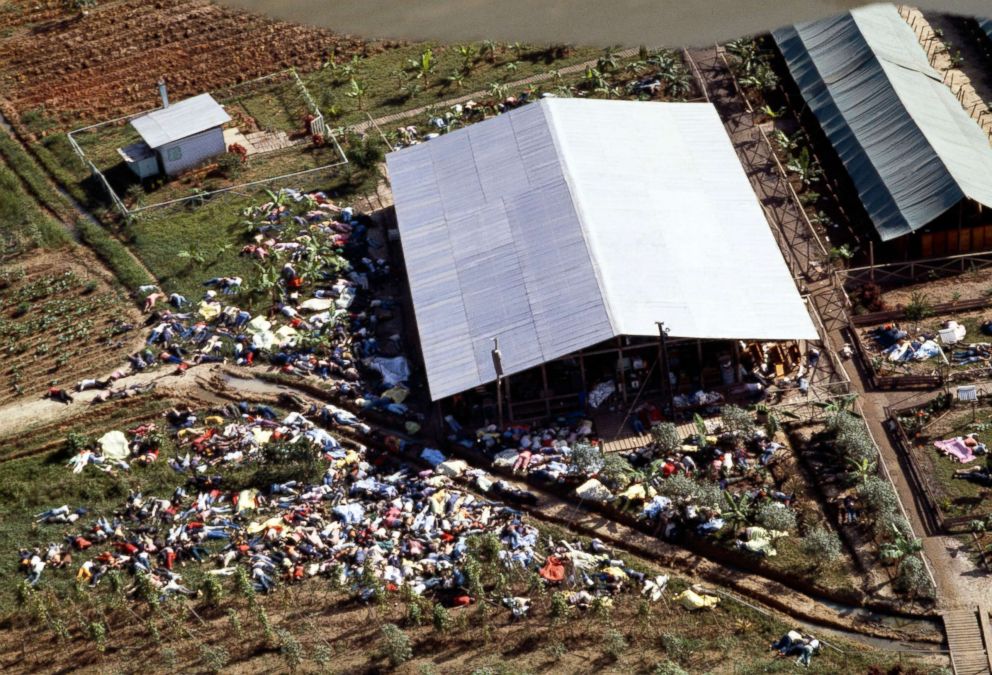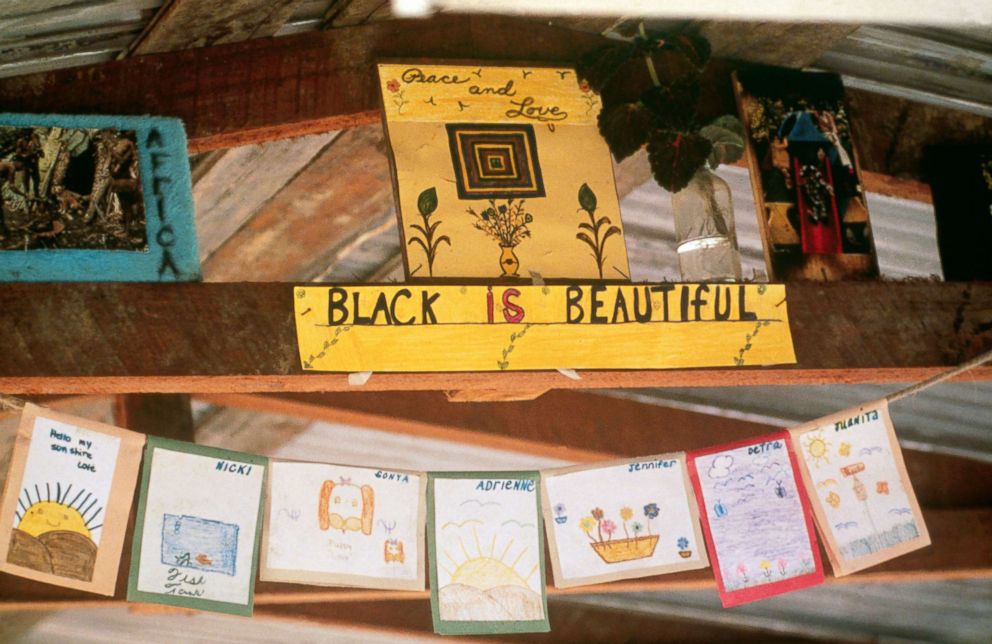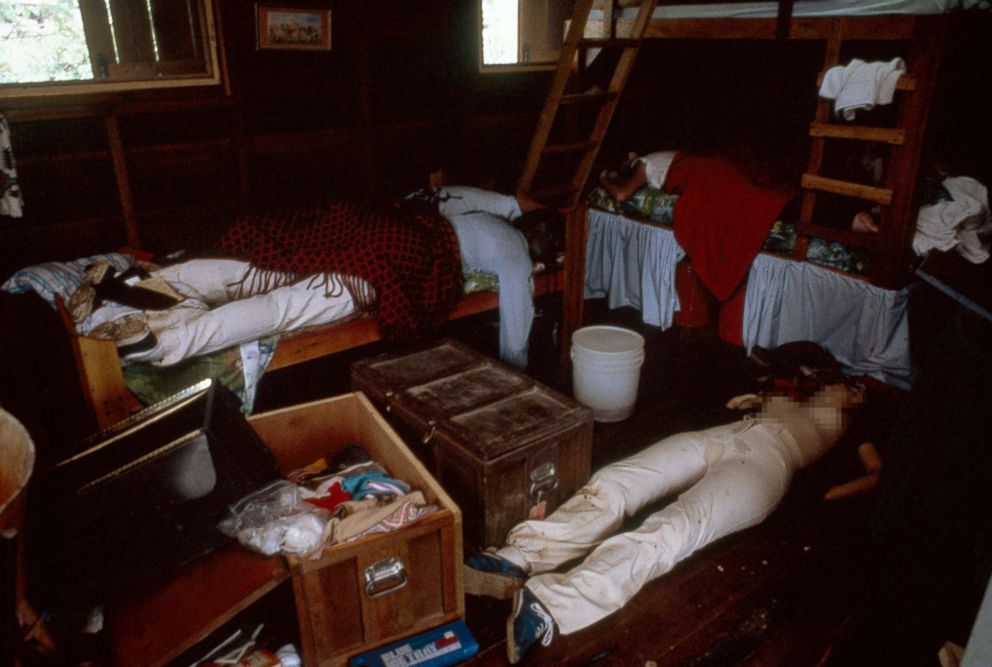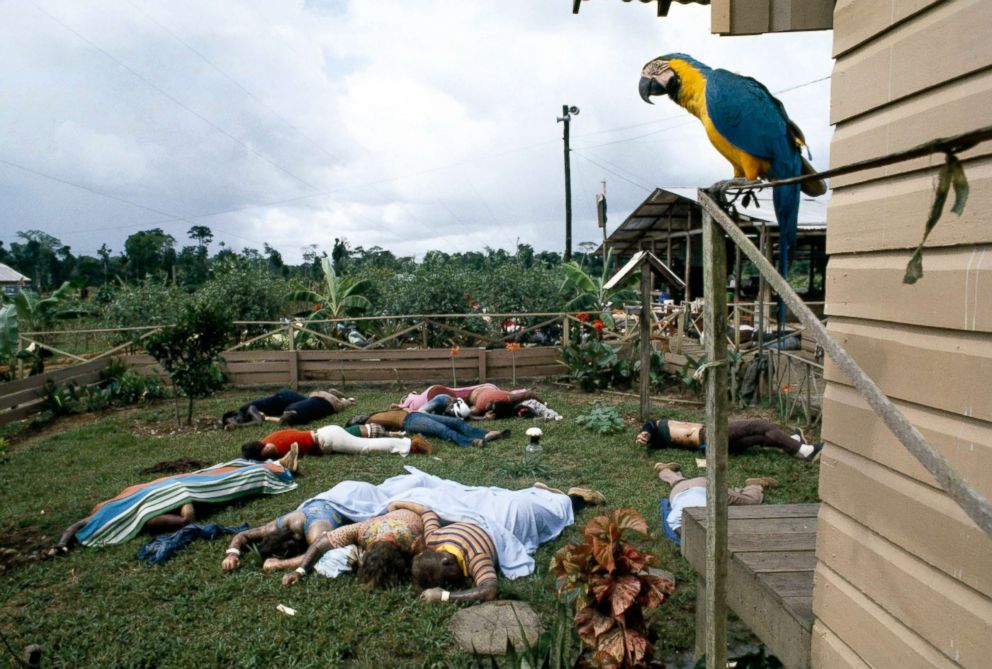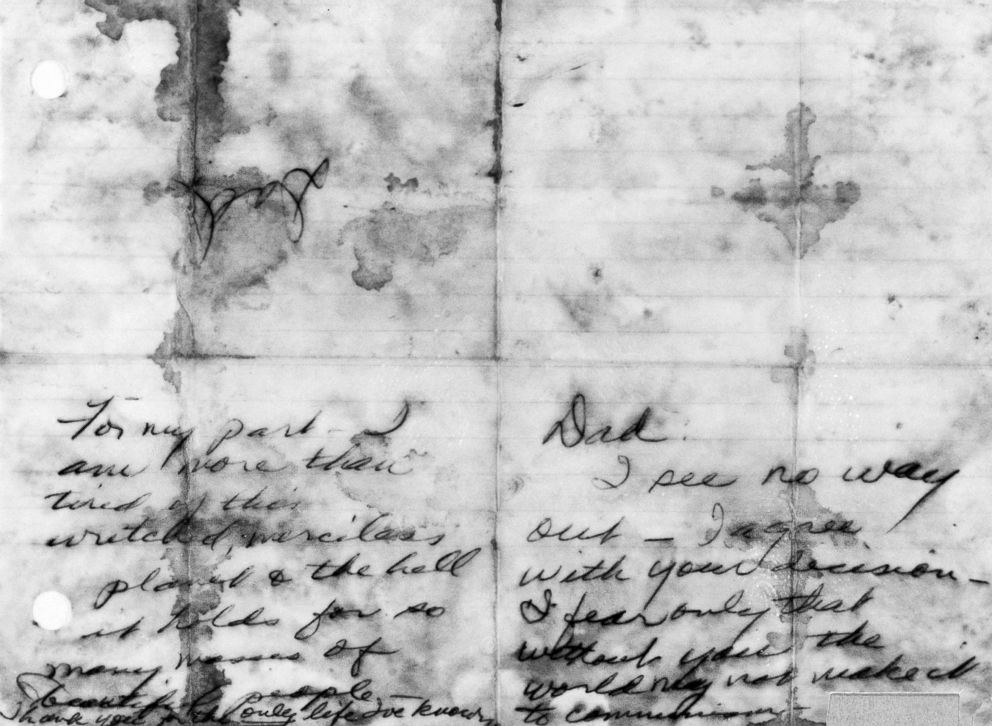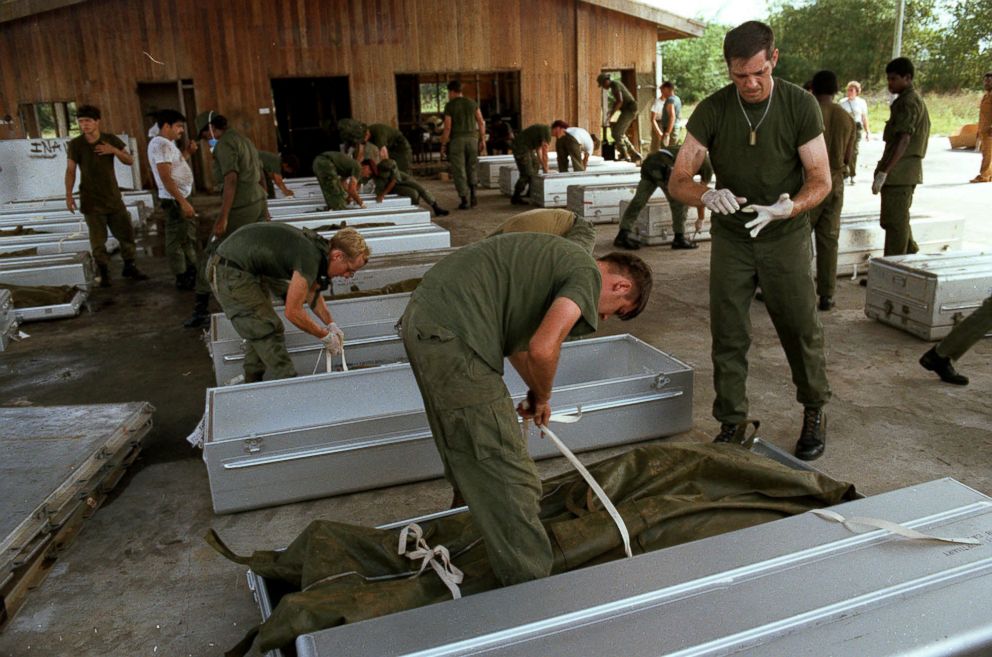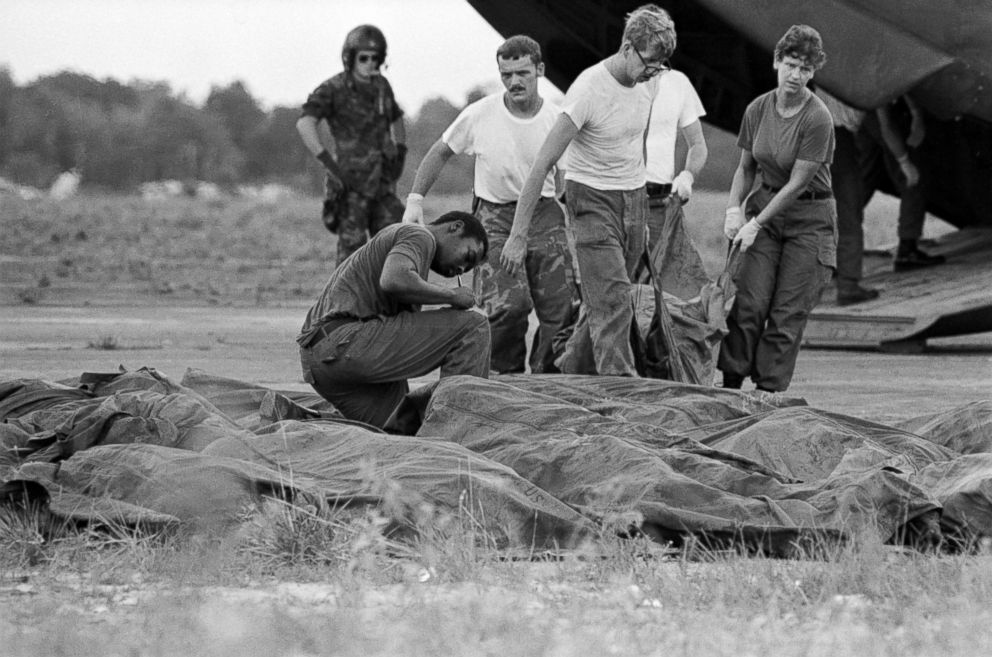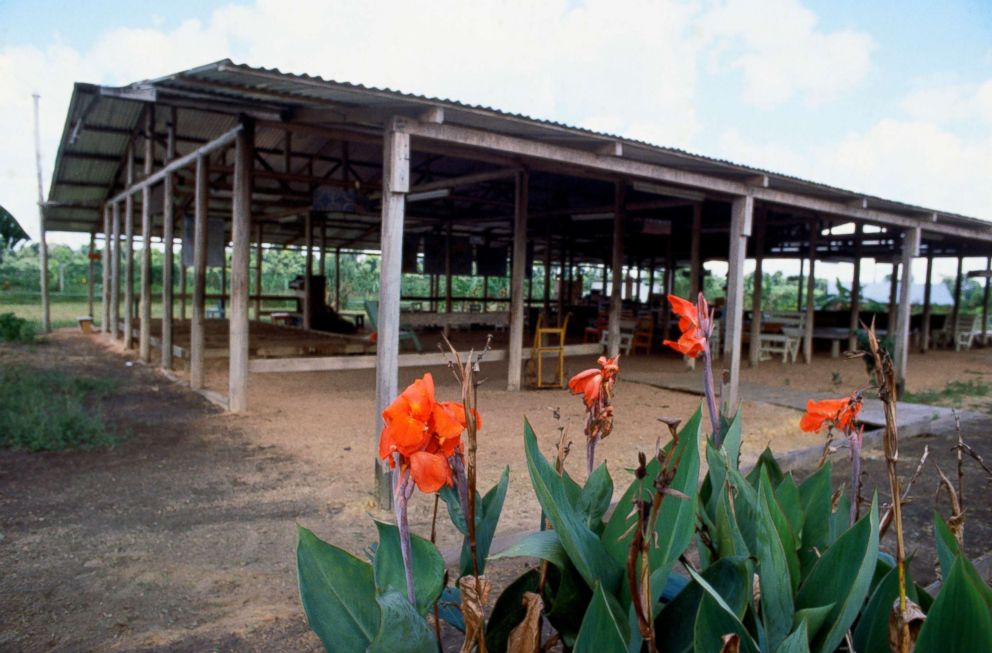40 years after Jonestown massacre, ex-members describe Jim Jones as a 'real monster'
At the time of his death, Jim Jones held such power over his followers that he was able to direct more than 900 of them to participate in a mass murder-suicide.
Jones was the leader of the Peoples Temple, a ministry of his own devising that convinced hundreds of Americans to move to his compound, known as Jonestown, in the South American nation of Guyana. Of the 918 Americans who lost their lives in the Jonestown massacre on Nov. 18, 1978, investigators determined 907 died from ingesting poison, including nearly 300 children. They used cyanide, and either injected it into people with syringes or mixed it with a powdered soft drink called Flavor Aid.
Others were shot or stabbed that day. Jones himself was found with a single bullet wound to the head.
Watch "Truth and Lies: Jonestown - Paradise Lost" on Friday, Sept. 28 at 8 p.m. ET on ABC.
The tragedy spawned the phrase "drinking the Kool-Aid" to describe blindly following someone, although that brand of powdered drink wasn't used that day and some survivors of the massacre dispute the claim that everyone who died at Jonestown willingly followed Jones to their deaths.
"The reality is that it was not some giant, 'Let's get together and die for Jim Jones moment'" said Tim Carter, a former member of the Peoples Temple, who escaped death that day only because a top aide of Jones sent him away from the compound to go on a last mission for the church. "It was exactly the opposite. That was my experience. What happened in Jonestown was murder."
Before Jones became known as an unhinged religious leader, he was a kid growing up outside the small town of Crete, Indiana. He said in an interview once that he was born on the wrong side of the tracks, an outcast who found a home in the Pentecostal church.

Captivated by the charismatic style of Pentecostal and Methodist preachers, Jones became a preacher himself. He rose to prominence in the 1950s and founded his ministry, the Peoples Temple, in which Jones, who was white, promoted social justice, racial and class equality and desegregation. But some of his former followers said he paid lip service to those ideas to lure people in."He was a predator who had really … mastered the art of luring people from every segment of life," said former Peoples Temple member Yulanda Williams.
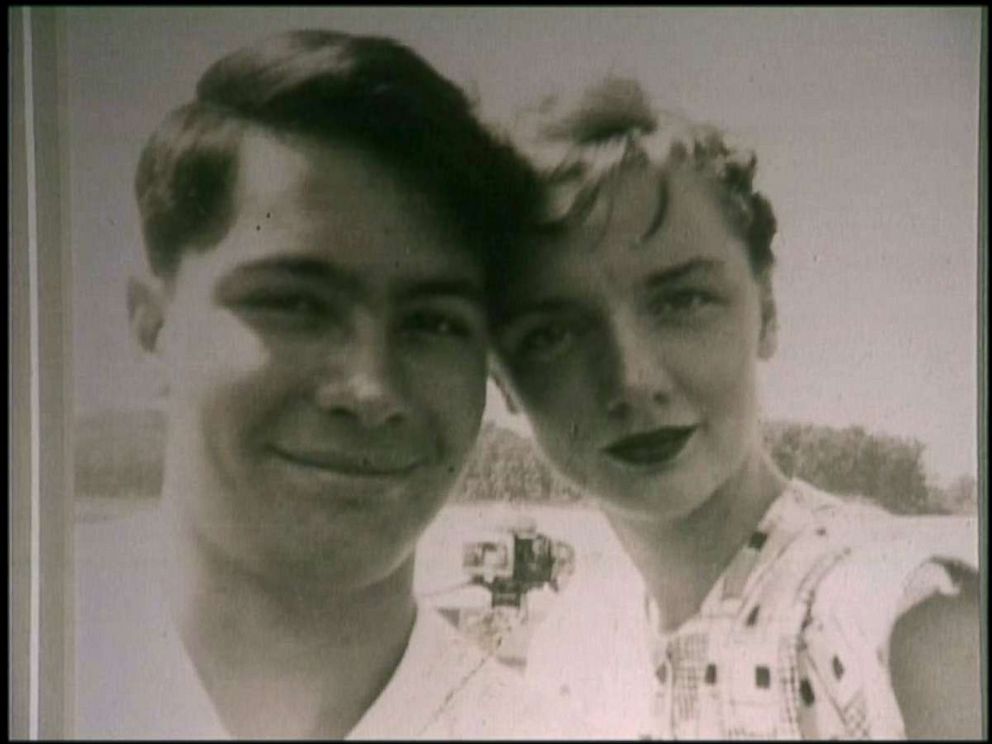
In addition to their biological son, Stephan, Jones and his wife, Marceline, had adopted children of Korean-American, African-American and Native-American descent."They called themselves the 'Rainbow Family,' because they wish[ed] -- both in their church leadership life and in their personal life -- to show that all people are equal before God," said Jonestown scholar Mary Maaga.


Jones moved the church first to Redwood Valley, California in the 1960s, then to San Francisco in the 1970s, and his congregation swelled to roughly 5,000 members. Many said they were drawn to Jones' inclusive, anti-war and anti-capitalist messages. Another attraction, former members said, were showy "faith healings," in which Jones seemed to miraculously and instantaneously heal sick or injured people."I thought he could heal because I saw healings and I thought they were real," said former Peoples Temple member Leslie Wagner-Wilson. "He was a master of manipulation, but you saw him with this dark hair, the sunglasses, and the way that he spoke -- he was a great orator -- and it moved you, it inspired you because he was so passionate. And so I was just enthralled."
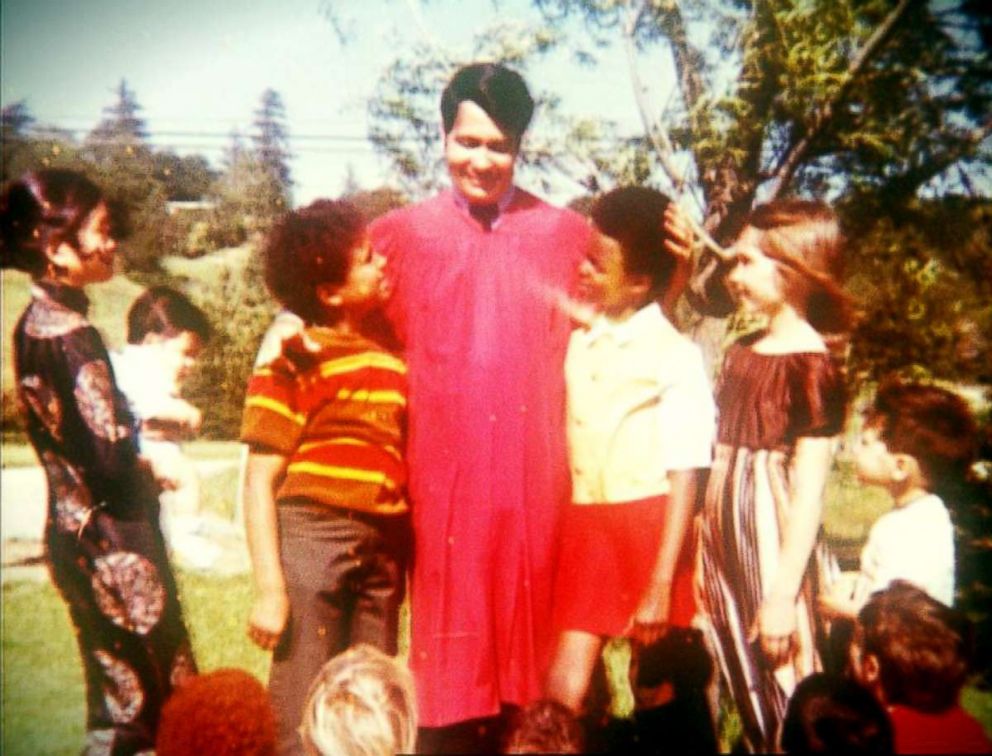
As time went on, former members said Jones became more extreme, manipulating his congregants with blackmail and administering humiliating beatings to those who displeased him. Former members also said he abused drugs and alcohol."Punishment became a normal thing," said Williams, one of the former members. "His behavior became totally irrational. You begin to just go with the flow out of fear. Fear of the fact that if you left the church, what you might experience, what danger might be brought to you."
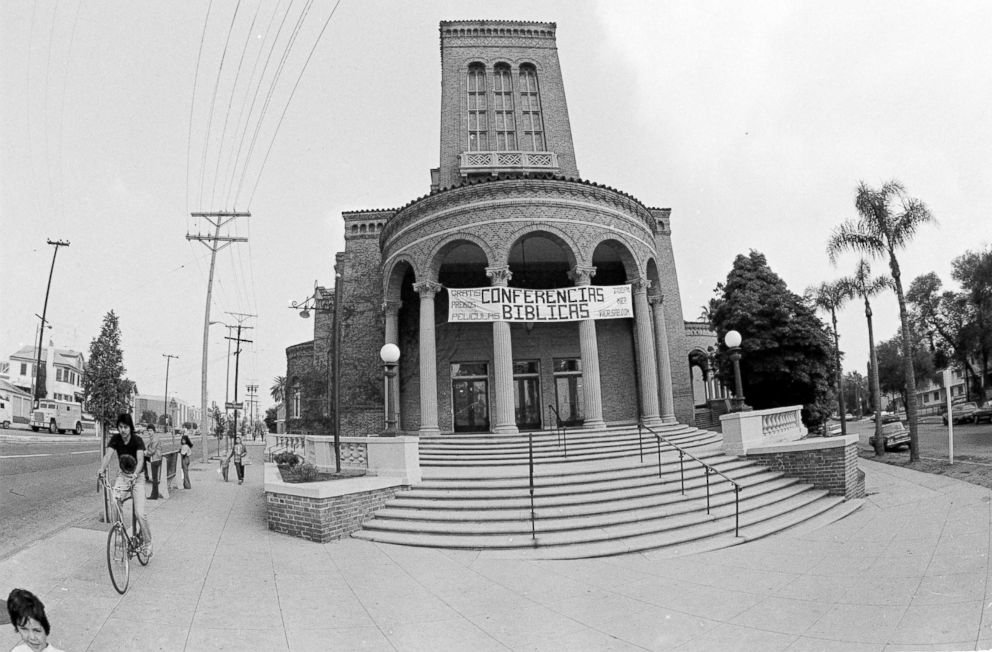
"He started to alienate you from your families … destroy that family unit," she continued. "So that then he could become the predator, but also the one who was the provider of every need that you required in life."
Some former members said he would also practice "fake suicides" in small groups. "Dying for the cause" was something some former members said Jones brought up regularly.
In 1974, Jones leased more than 3,800 acres of isolated land in the jungle from the Guyanese government. He believed that the mostly English-speaking South American country could become a sort of utopia for his California-based congregation.
"He even showed us this movie about the Jewish concentration camps, called 'Night and Fog," Williams said. "He said, 'This is what they have planned for people of color. We've got to build our land up over there in Jonestown, we've got to get over there. We've got to move fast, we've got to move swiftly, we've got to pool our resources together."
"I mean, he sold us a bill of goods," she added.
"You got to remember, this all started back in the '60s and '70s. Our society was in turmoil. There was constant aggression going on. You had riots going on," said former Peoples Temple member Thom Bogue. "And then you have Jim Jones saying, 'Do I have the place for you. For us.'"
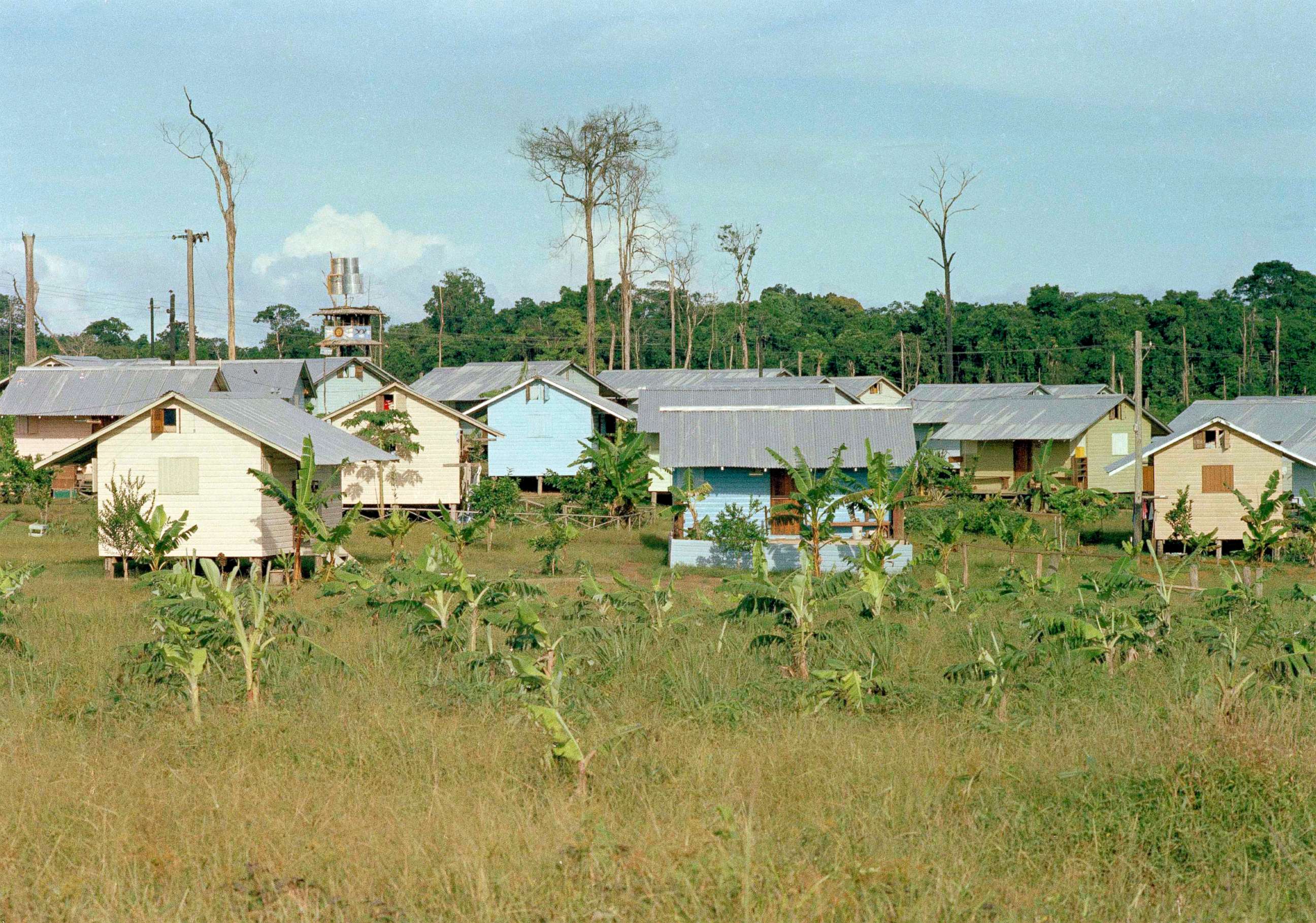
Two years later, 50 of Jones’ followers, along with Guyanese workers, started building a Peoples Temple compound in the middle of the jungle. It became known as Jonestown.
"We were building something grand down there. We really were. It was something fantastic," said Bogue, who was about 13 or 14 years old when he arrived. "I could even, at that age, see that we had built something big, kind of cool, in the middle of the jungle."
Members built cabins, and would eventually set up a daycare, a medical clinic and a pavilion for community gatherings. They also planted crops and raised pigs and chickens. At first, it seemed to some members that Jones had delivered on his promises.
"We were working 18 hours a day but we were seeing the fruit of our labor," Jones' son, Stephan Jones, said. "There was real passion about what we were doing.”
Then, Jones started sending home videos of the compound back to the church in San Francisco. Former members said the videos showed beautiful cabins, food and smiling, happy people. Much of the promotional information, they said, proved to be false or exaggerated – life at the compound proved to be much more difficult and constricted than they had expected.
By 1978, nearly 1,000 followers had moved to the Guyana compound, former members said, and food started to run out. Having been forced to give up their passports and money upon arrival, some former members said they were cut off from the outside world.
"Everyone was forbidden from reading anything because [Jones said] they were liars," said former member Deborah Layton. "[He called it] fake news … Jones coined fake news. Anything that was written about him [he said ]was fake. It was all to ruin his name and his cause and what he stood for."
But during this time, some defectors spoke to the press about the Peoples Temple, and allegations of physical and sexual abuse against Jones surfaced. Layton, who made it out of Jonestown and back to the United States in May 1978, went to the authorities for help.
"I wrote an affidavit begging the United States government to get involved, that 1,000 people were being held against their will in Jonestown, and that Jones was a monster and had lost his mind," she said.
Williams and her family convinced Jones to let them leave Guyana on the condition that they return at a later date. While back in San Francisco, she says she was contacted by Rep. Leo Ryan, D-Calif., who was looking into allegations against Jones. Ryan decided to lead an investigative delegation to Jonestown in November 1978 to look into the allegations. The delegation included Ryan’s staff, members of the press and a number of people concerned about their relatives there.
Within 24 hours of the congressman’s arrival on Nov. 18, 1978, nearly everyone was dead. Members of Jones' security team shot and killed Ryan and four others on an airstrip near the compound as Ryan, members of his staff, journalists, defectors and family members were on their way to boarding planes to leave Jonestown. In the now famous "death tape," later recovered by the FBI at Jonestown, Jones can be heard instructing his followers to ingest the poison after the congressman was killed.
Roughly 90 former Peoples Temple members survived or managed to escape the mass murder-suicide at Jonestown. Jones' sons, Jim Jones Jr., 18, and Stephan Jones, 19, who had lived at the compound with their father, were at a basketball game in the captial city of Georgetown on the day of the massacre.
"When people say basketball saved their life, I can literally say basketball did save my life," Jim Jones Jr. said. "If I wasn't playing basketball, I would have died."
Looking back at the Jonestown tragedy
More than 900 Americans died in Jonestown on Nov. 18, 1978 -- the largest single mass death until 9/11.Stephan Jones has since written several essays about his father and the legacy of Jonestown.
Many former members still carry the guilt and shame of what happened in Guyana.
For some, including Williams, Jonestown changed their lives forever, and they have tried to move forward. She now works as a police officer in San Francisco.
"I think that Jim Jones was a predator. He was a manipulator. He definitely was a monster, a real monster," Williams said. "What I do today, as a police officer and the person that I've become, it's all due to my experiences in this cult. I've found the importance of being courageous. The importance of being outspoken and the importance of speaking with people and listening to them and trying to assist them in whatever way I can for them to get out [of] situations that are not healthy for them."
ABC News' Muriel Pearson contributed to this report
Watch "Truth and Lies: Jonestown - Paradise Lost" on Friday, Sept. 28 at 8 p.m. ET on ABC.

